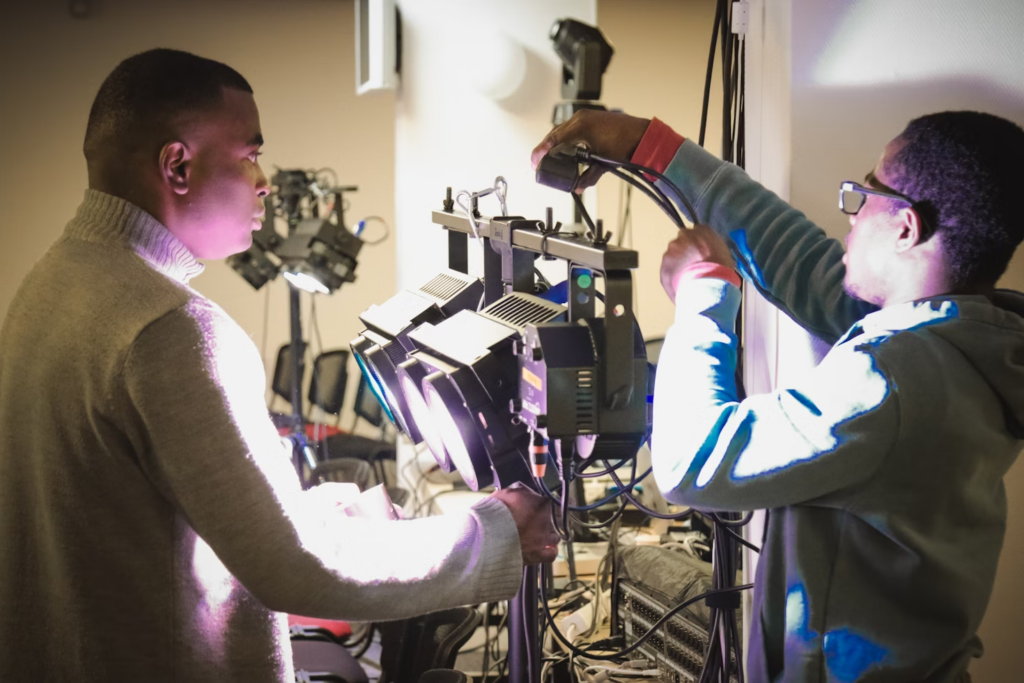
Course Description: The Technology for Tomorrow course is a 7-day training program that aims to equip educators with the knowledge and skills to integrate emerging technologies into STEM (Science, Technology, Engineering, and Mathematics) education. Participants will explore a wide range of innovative technologies and learn how to leverage them to enhance student engagement, critical thinking, and problem-solving abilities. Through a combination of interactive sessions, hands-on activities, and seminars with experts from the academic sector, participants will gain practical insights and strategies to effectively incorporate emerging technologies into their teaching practices.
Course Objectives:
- Understand the importance of integrating emerging technologies in STEM education.
- Explore a variety of emerging technologies and their applications in different STEM fields.
- Develop the skills to incorporate emerging technologies into lesson planning and delivery.
- Promote collaboration, creativity, and critical thinking through technology-enhanced activities.
- Examine ethical considerations and responsible use of emerging technologies in education.
- Engage in seminars with experts to gain insights into future developments in educational technology.
- Design and implement technology-rich projects and assessments to assess student learning
Course Motivation: The Technology for Tomorrow course is motivated by the need to prepare students for the rapidly evolving technological landscape and equip them with the skills required for future careers. Emerging technologies such as artificial intelligence, virtual reality, robotics, and Internet of Things have the potential to revolutionize various industries. By integrating these technologies into STEM education, educators can provide students with hands-on experiences and foster their digital literacy, problem-solving abilities, and creativity. This course aims to empower educators to embrace and leverage emerging technologies to create engaging and impactful learning environments for their students.
Teaching Methodology: The course employs a blended learning approach, combining theoretical sessions, hands-on activities, group discussions, and seminars with experts. Each day of the course focuses on specific emerging technologies and their applications in STEM education. Here is a breakdown of the daily sessions:
Day 1: Introduction to Emerging Technologies in STEM Education

- Understanding the role of emerging technologies in shaping the future of education.
- Exploring the potential benefits and challenges of integrating emerging technologies.
- Discussing ethical considerations and responsible use of technology in the classroom.
Day 2: Artificial Intelligence and Machine Learning in STEM
- Exploring the basics of artificial intelligence and machine learning.
- Hands-on activities using AI tools and platforms.
- Designing AI-driven projects for STEM subjects.
Day 3: Virtual and Augmented Reality in Experiential Learning
- Understanding the principles of virtual and augmented reality.
- Engaging in virtual simulations and augmented reality experiences.
- Designing immersive learning activities using VR and AR.
Day 4: Robotics and Automation in STEM Education
- Exploring robotics technologies and their applications in STEM fields.
- Hands-on activities with robotics kits and programming languages.
- Integrating robotics into project-based learning.
Day 5: Seminars with Technology Experts
- Seminars featuring experts from the technology and education sectors.
- Discussions on emerging trends, future developments, and challenges in educational technology.
- Collaborative problem-solving sessions and Q&A with experts.
Day 6: Internet of Things (IoT) and Data Science in STEM
- Understanding IoT concepts and applications in real-world contexts.
- Collecting and analyzing data using IoT devices.
- Incorporating data science into STEM projects.
Day 7: Designing Technology-Enhanced STEM Projects
- Reflecting on the learning journey and experiences throughout the course.
- Collaborative design and implementation of technology-rich STEM projects.
- Showcasing and sharing participants’ projects.
Future Developments and Risks: In the future, emerging technologies will continue to advance at a rapid pace, offering new possibilities and opportunities for STEM education. Governments need to adapt their guidelines and policies to ensure that educators are adequately equipped to integrate these technologies effectively. Failure to do so may result in missed opportunities for students to develop the necessary skills and competencies for future careers. Additionally, there is a risk of exacerbating the digital divide if equitable access to technology and training is not ensured for all students. Governments must prioritize investment in educational technology infrastructure, professional development for educators, and policies that promote equal access to technology to mitigate these risks and create a more inclusive and innovative learning environment.
